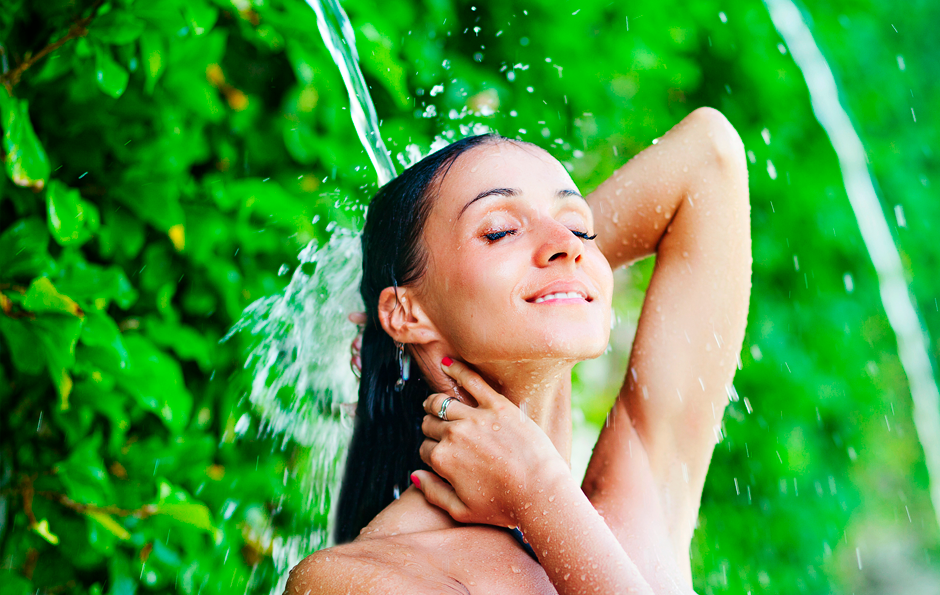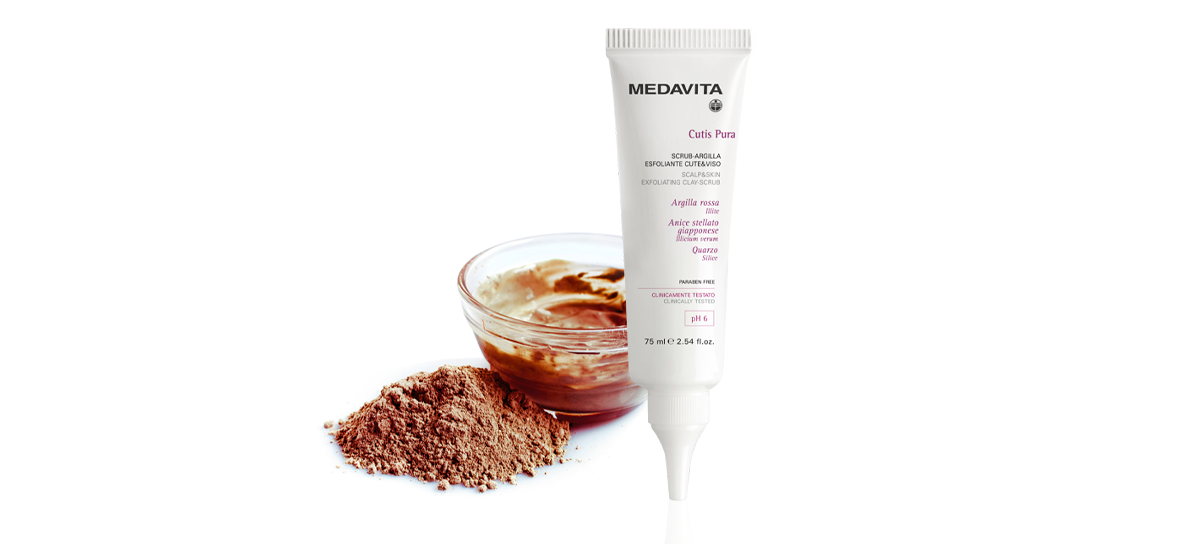 Clay is the most versatile of all materials. It is used in everything from ceramics to building and cosmetics and has been known since ancient times for its properties that nowadays we’d call ‘multitasking’. Like other natural remedies, clay is a complex material: its properties do not depend on just one element, but on the interaction of the various substances of which it is made up, which increase its effectiveness. Clay is a combination of mineral systems in which the main element is aluminium silicate. Depending on the predominance of one mineral over another there are various types of clay: green, red, white, brown, yellow, pink, grey, blue and beige.
Clay is the most versatile of all materials. It is used in everything from ceramics to building and cosmetics and has been known since ancient times for its properties that nowadays we’d call ‘multitasking’. Like other natural remedies, clay is a complex material: its properties do not depend on just one element, but on the interaction of the various substances of which it is made up, which increase its effectiveness. Clay is a combination of mineral systems in which the main element is aluminium silicate. Depending on the predominance of one mineral over another there are various types of clay: green, red, white, brown, yellow, pink, grey, blue and beige.
The cosmetic proerties of clay.
Clay is particularly effective in treating skin problems like eczema, burns, sunburn, acne, seborrheic dermatitis and contact dermatitis, seborrhoea and mycosis. Its absorbing and purifying properties are well known, but it is less well known as an antioxidant. In fact, clay captures the free radicals responsible for skin ageing.
Red Clay.
In our case, we are using the valuable help of a special type of clay – red clay – used for over 1,400 years for skincare, cosmetics and as a natural remedy, due to its beneficial effects on health and well-being. Red clay is a natural mineral, a living mixture of aluminium silicate substances derived from granite rock. It is one of the clay varieties with the highest content of trivalent iron oxide, which gives it its characteristic colour and cell-renewing properties. It also contains calcium, magnesium and sodium. » anti-septic and bactericide: as it is sterile, clay prevents the activity of bacteria, creating a hostile environment for their growth, without damaging the organism. It neutralises only excess bacteria without impeding cell regeneration. » anti-inflammatory and pain killing: thanks to its thermo-absorbent ability it manages to calm inflammations of both the skin and joints. » absorbent, anti-toxic and remineralising: as a result of its micro molecular composition, it can absorb large amounts of water and toxins, especially due to its particular capacity for ion exchange, which extracts toxins and passes mineral salts to tissue through osmosis. » healing: it stimulates blood coagulation and accelerates the regenerative processes of tissue, thanks to the presence of aluminium and its basic qualities (it has an almost neutral pH). » energising: the mineral complex regenerates cell activity. In particular, calcium fortifies elastic tissue while magnesium fortifies muscle tissue, due to its ability to release small doses of electromagnetic energy acquired during exposure to the sun, air and water, reawakening energy potential and acting as a catalyst for biological processes. It is easy to see that due to its abilities to help regenerate skin, to hydrate and drain, red clay is widely used in the cosmetics industry and in face, hair and body care.
The Medavita Red Clay Scrub.
Medavita has created a special body and scalp exfoliating scrub with red clay, associated with hydrating molecules of allantoin and panthenol, with shikimic acid, Japanese star anise extract and a special enzyme called protease. This powerful combination of ingredients produces a cosmetic with exceptional smoothing properties, which promotes the removal of keratin flakes, restores skin bacterial flora and absorbs excess sebum. The presence of quartz granules acts as an effective yet delicate mineral scrub for skin. Exfoliating skin means removing the layer of dead cells and impurities and accelerating skin regeneration, leaving a feeling of freshness, well-being and vitality. Skin on the face and body appears brighter and smoother. The anti-inflammatory effect of red clay is particularly suitable for greasy skin on the face and scalp, impure but also delicate, and for those who suffer from dermatitis and skin redness. It is obvious that thanks to its skin rebalancing action it is effective as a face mask and as a purifying pre-shampoo treatment for the scalp. In the first case, it can be applied uniformly and left on for 10 minutes. When it dries it becomes a film that sticks to the skin and, once it is rinsed off, it takes with it all the impurities and dead cells of the skin layer, leaving the face smooth and soft. For the scalp, it should be applied regularly, in sections, massaged in and left on for 15 minutes. It has a preventative action against the most common scalp problems like dandruff, seborrhoea and hair loss. Clay scrub is therefore a vital treatment for health and hygiene, but also for beauty in order to obtain smooth, oxygenated, purified and hydrated skin, as well as healthier shiny hair ready to receive other curative treatments.
Body Scrub.
Medavita clay scrub also has a valuable use as a body exfoliant. As well as its regenerating action for the skin, the scrub stimulates circulation and is an excellent toning and draining compress, useful for making legs feel lighter and for preventing capillary fragility. If used regularly throughout the year, especially during summer, it prepares the skin for sunbathing, by delicately exfoliating and moisturising it to make a tan darker and more uniform. With the aid of highly nourishing and moisturising active ingredients like sweet almond oil and avocado oil, full of natural anti-oxidants, the clay scrub can become a valuable cosmetic that is particularly suitable for delicate, dehydrated skin, as a beauty ritual for the body. Clinical tests carried out by specialised laboratories support the real effectiveness of clay, as a gift from the earth. 


Validate your login
Sign In
Registrati a "Medavita Salon Friends" e ricevi vantaggi e promozioni per i servizi in salone.
Create New Account